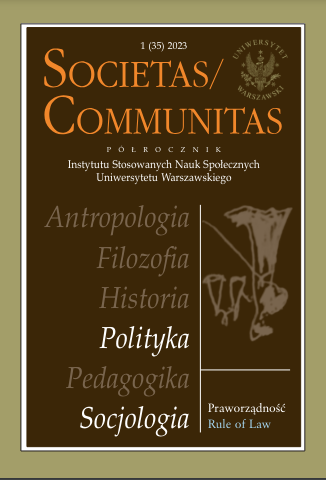Ile rynku w rynku - o gospodarkach dualnych
How Much Market in the Market - On Dual Economies
Author(s): Stefan Małecki-TepichtSubject(s): Economy, National Economy, Business Economy / Management, Economic development, Financial Markets
Published by: Instytut Stosowanych Nauk Społecznych Uniwersytetu Warszawskiego
Keywords: dual economy; non-market mechanisms of economy; market mechanisms of economy; households; enterprises; the state;
Summary/Abstract: In this paper, part of a larger whole, the author argues that economy processes are always of a dual nature. This means that two mechanisms govern economies in parallel: a non-market mechanism, and a market mechanism. The action of these two different mechanisms is strictly connected to two different goals of economy: goals that are pursued by economic entities, that is, by households, enterprises and the state. Households aspire to satisfy the needs of household members. This means that they will exert themselves and spend until they obtain a product of the size required for the household’s endurance and survival. In other words, they will maximise the product as the sum of spending and effects, P=S + E. The state functions in a manner similar to the household, just on a much larger scale - with the goal of enduring and surviving, it maximises the product as the sum of spending and effects, which guarantees the endurance of the state (of power). This is the non-market mechanism of economy. Enterprises on the other hand have a totally different goal. They seek to maximise profit as the difference between product size and spending, E=P-S. This is the market mechanism of economy. History has been witness to these three groups of entities participating in each others’ processes of economy for at least the last 10,000 years, from the hunter-gatherer tribes to today’s 193-plus member states of the United Nations. These three different groups of economic entities pursuing their own goals mean that the process of economy is subjected simultaneously to two different action mechanisms. And we are therefore dealing with dual economies. The author strives to demonstrate that this dualism of economy reveals itself above all in the labour market, where households participate through labour supply, while enterprises and the state are behind the demand for labour. It is the participation of household members in the economic activities of enterprises and the state that causes them (the households) to “transplant” the nonmarket mechanism onto the functioning of the market mechanism of the two other groups of entities. Nota bene, this is the only “market” on which the state behaves like an enterprise, a business. Taking the labour market theme further, the author aims to present its attributes that determine the dual economy nature. After Arthur Lewis, he cites his division of the labour market into “bad” and “good” jobs depending on their location (rural or urban) and their sectors of the economy (agriculture - industry). It is precisely because of this dualism of economy that we have Baumol’s “cost disease” in the sphere of services, where labour costs are growing faster than the productivity of the employed. S. Gomułka distinguishes two areas of the world’s economies, where the first - with 15% of the population - is responsible for 95% of patents in modern manufacturing techniques, and the other, with the remaining 85%, accounts for 5% of such patents. He says: “A high level of duality means that in these two areas, the sources of technical progress are completely different, and as such the mechanisms behind economic growth must also be different” (Gomułka 2016: 18). The author sees justification for such an understanding of dual economy both in Aristotle, from over 2,000 years ago, and in the work of Ranis and Fei, dealing with the dual economy for at least half a century.
Journal: Societas/Communitas
- Issue Year: 2023
- Issue No: 35 (1)
- Page Range: 155-179
- Page Count: 25
- Language: Polish

